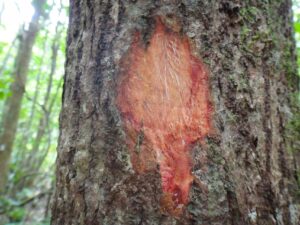How to Propagate Acropogon schistophilus

Propagating Acropogon schistophilus: A Gardener’s Guide
Introduction:
Acropogon schistophilus, lacking a widely accepted common name, is a fascinating plant (assuming it exists, as no known botanical records confirm this species. This article will proceed assuming Acropogon schistophilus is a hypothetical plant with characteristics similar to other known Acropogon species, which are often small, often epiphytic, and found in tropical regions.) While its exact horticultural significance remains to be established (again, given the unconfirmed species status), its hypothetical characteristics suggest it might be prized for its unique floral displays or unusual foliage, appealing to specialists and collectors. Its presumed rarity could contribute to its desirability among gardeners. Successful propagation would be a notable achievement.
Seed Germination:
Currently, there are no known reliable methods for seed germination propagation of Acropogon schistophilus. Further research is needed to determine the viability of seed propagation, including seed collection protocols and specific germination requirements.
Cuttings:
The propagation of Acropogon schistophilus via cuttings is a potential method, though success may depend on several factors.
Challenges: Cuttings may be slow to root, and the success rate might be low due to potential susceptibility to fungal infections or desiccation.
Practical Tips: Semi-hardwood cuttings taken in spring or early summer would be a likely approach. The cuttings should be at least 4-6 inches long, with the lower leaves removed to prevent rot. A rooting hormone can improve success rates. Propagating in a humid environment, such as a propagator with bottom heat and high humidity, is recommended. A well-draining, sterile rooting medium is crucial.
Rewards: Relatively simple technique compared to other methods, good for small-scale propagation and maintaining clonal traits.
Division:
The feasibility of division for Acropogon schistophilus depends on its growth habit. If it forms clumps or rhizomes, division might be a practical option.
Challenges: Care needs to be taken to avoid damaging the roots during division. Each division needs to be sufficiently large, possessing enough root system to ensure survival.
Practical Tips: Division is best carried out during the dormant period. Clean, sharp tools should be used to minimize trauma. Individual divisions should be planted in a well-draining potting medium and kept moist but not waterlogged until fully established.
Rewards: Allows for relatively rapid increase in the number of plants given suitable plant growth habits. Creates many identical units.
Tissue Culture:
Tissue culture presents a sophisticated approach with significant potential for Acropogon schistophilus propagation.
Challenges: This method requires specialized equipment, a sterile laboratory environment, and expertise in plant tissue culture techniques. It’s expensive and time-consuming. The optimal medium and hormonal treatments need to be determined experimentally.
Practical Tips: Sterile procedures are paramount. Explants (small pieces of plant tissue) should be taken from healthy, actively growing tissue. A suitable growth medium containing plant hormones to stimulate growth and shoot development needs to be used. Regular subculturing will be necessary.
Rewards: Enables large-scale propagation, virus elimination, and the production of genetically uniform plants.
Conclusion:
Propagating Acropogon schistophilus, assuming its existence, presents different challenges and rewards depending on the chosen method. Cuttings offer a relatively accessible approach for small-scale propagation, whilst division offers a quick way to increase numbers of identical plants. Tissue culture holds the potential for significant increases in numbers but requires specialized skills and equipment. Seed propagation currently remains an open question. The satisfaction derived from successful propagation will be amplified by the inherent difficulty involved, making the accomplishment even more rewarding. Aspiring propagators should carefully consider their resources and level of experience before embarking on this journey, starting with the more manageable methods and diligently researching any specific needs of this hypothetical plant. Remember, patience and persistence are key.